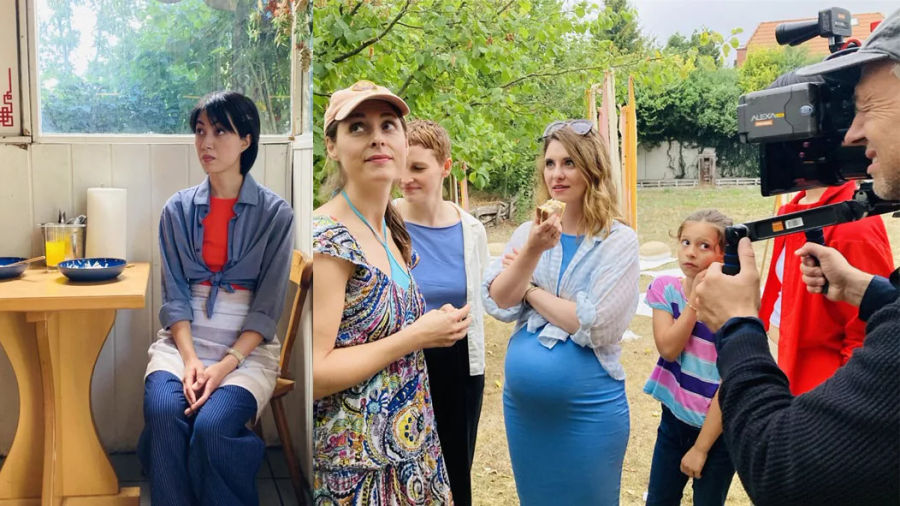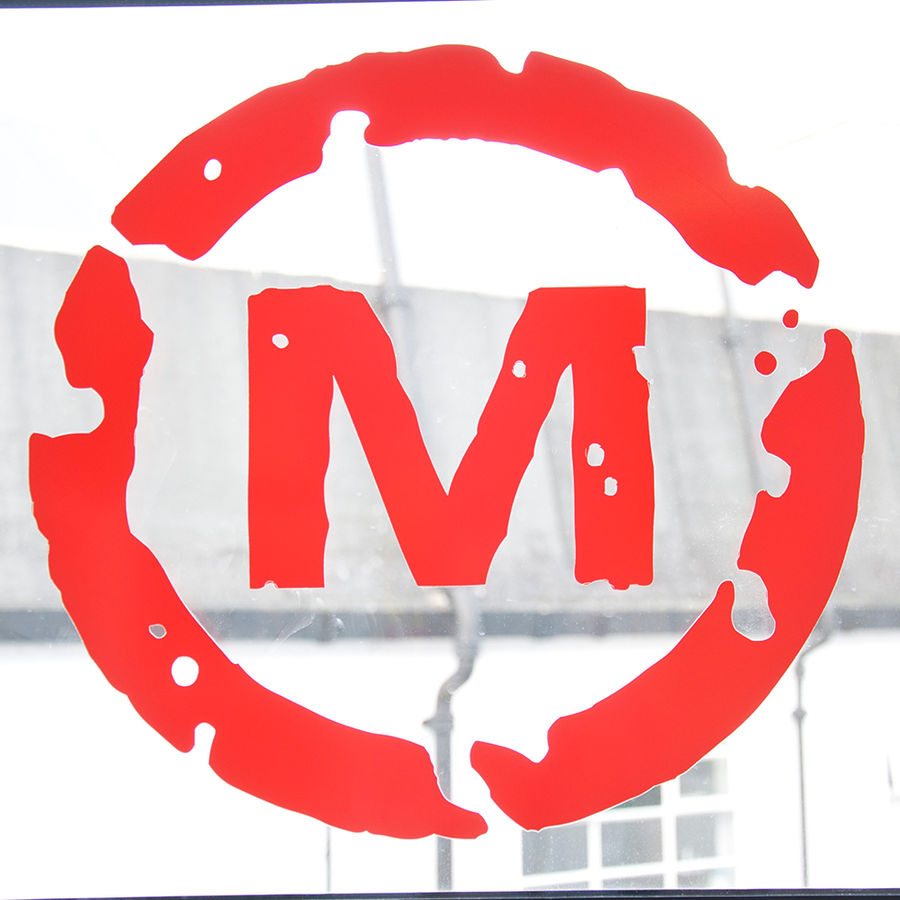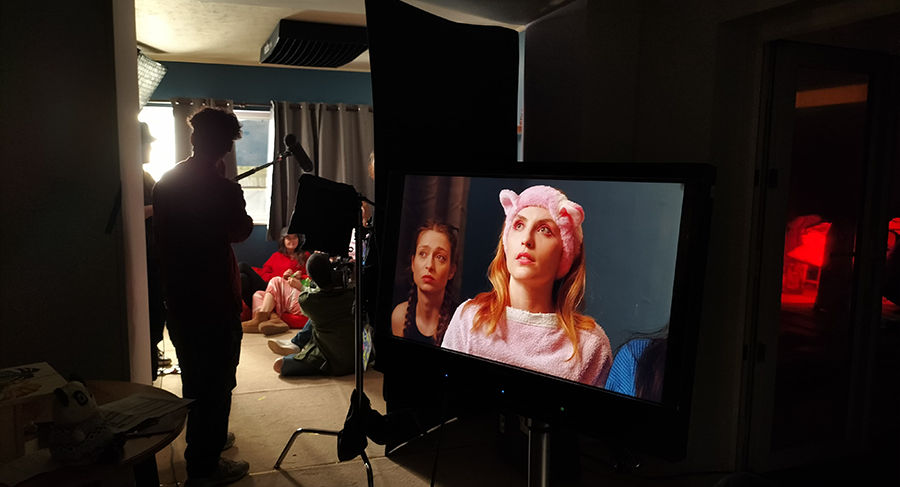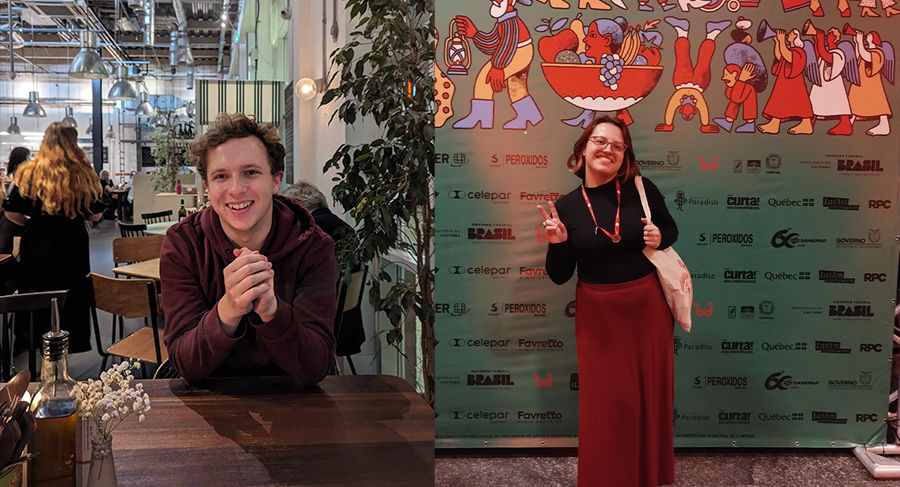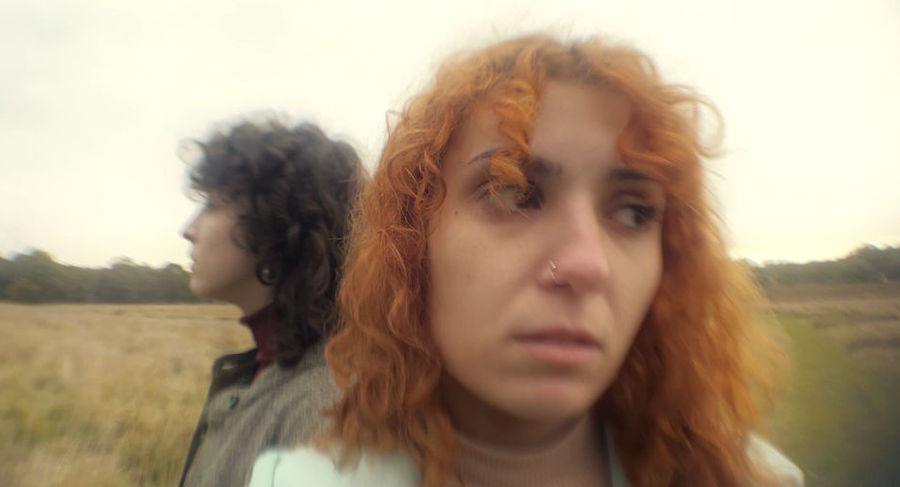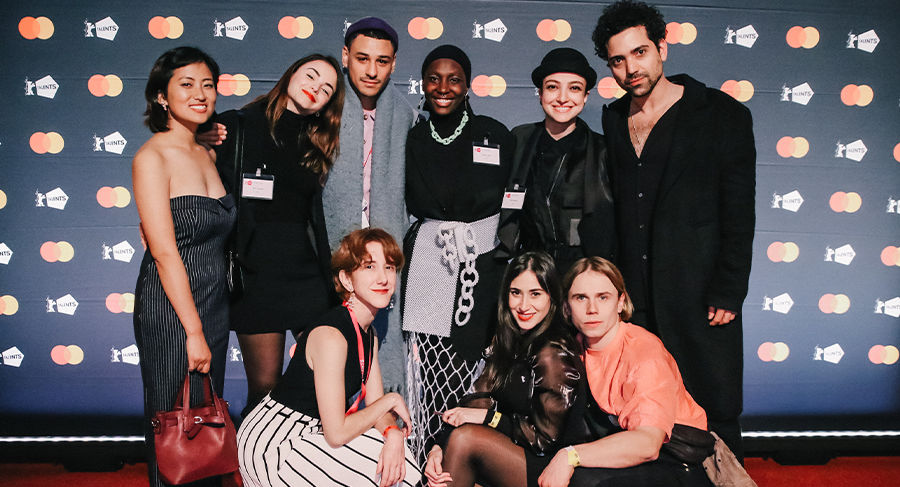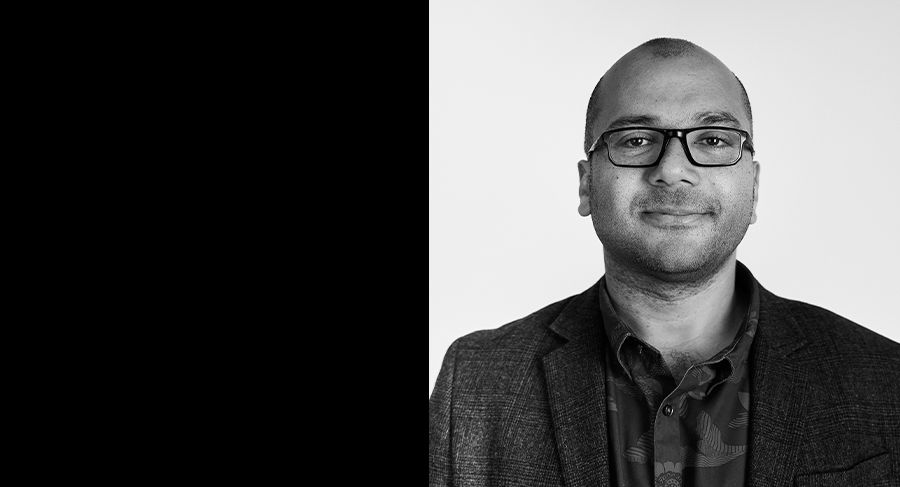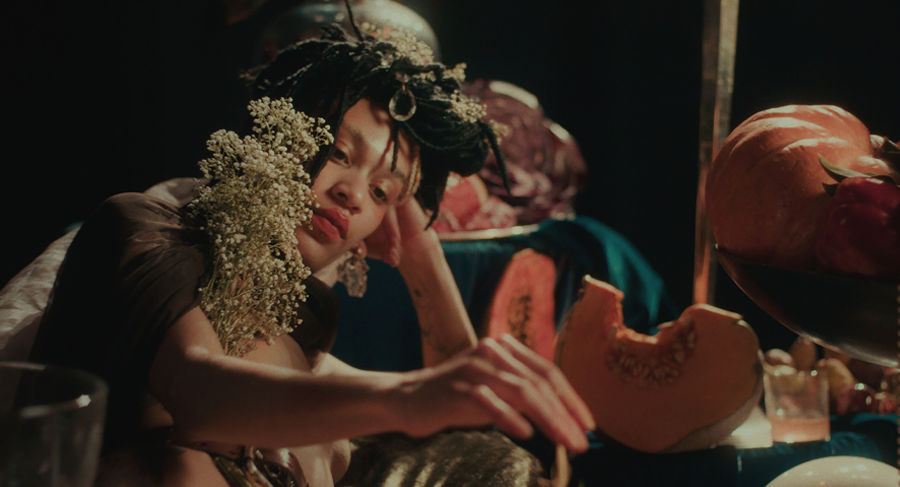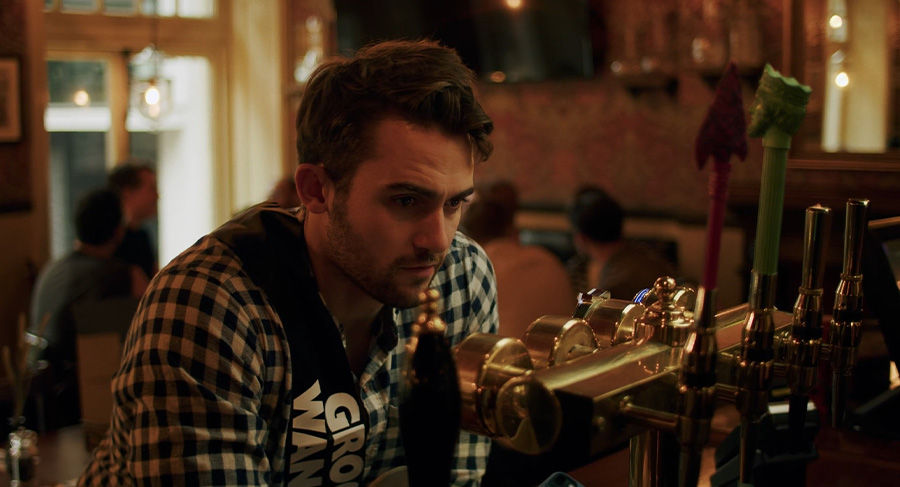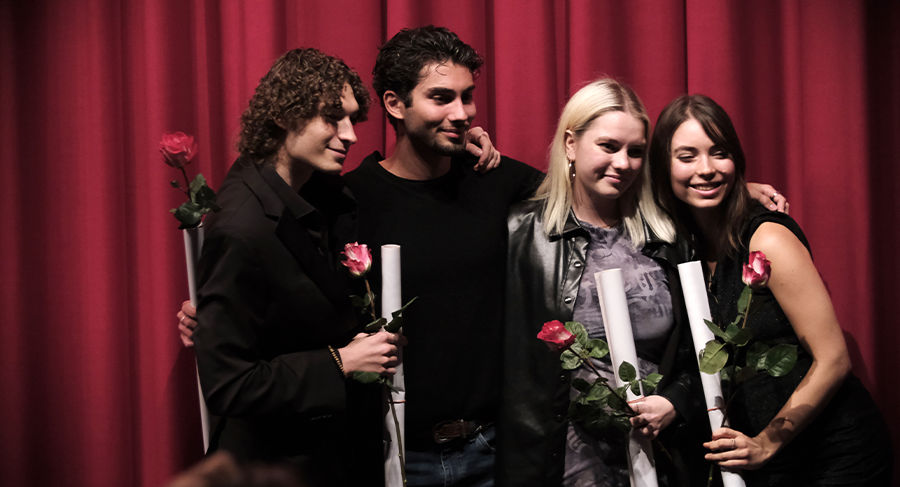Athanasios Karanikolas (MA Directing Programme Leader) on directing ‘WIR’
By Elise Czyzowska
13 February 2023
Earlier this year, the third season of WIR aired on ZDF, one of the main German national broadcasting stations. The show, which follows ‘the life and love of a circle of friends in their thirties’, first aired in 2021, and for its third season, MA Directing Programme Leader, Berlin Athanasios Karanikolas joined the crew as the director for four episodes.
With a background in feature film directing, specifically of art house films which he has written himself, directing a television series was a wholly new challenge for Athanasios, and when we spoke to him for today’s blog, he shared how he approached the project, as well as what his students have taught him about the craft of directing. Keep reading to find out more…
Can you share how you got involved in the show?
The series’ exciting producers Lasse Sharpen and Lucas Schmidt are long-time collaborators of mine. We’ve already shot three feature films together over the last decade, also in collaboration with the ZDF. The production company had already shot the first two seasons, and asked me to direct the centre piece of the third, as they thought they needed an experienced director to do that.
I had never shot a series, and it was a big challenge. I was aware of the difficulties I would face with the format, specifically regarding the amount of work to be done in such a short shooting time. 100 minutes of film in 16 days, with a group of ten actors (including two small children), across multiple locations (even in the woods of Brandenburg at night!) didn’t exactly sound like a walk in the park, but as I had only done art house films before, I was eager to prove, most of all to myself, that I could do it.
The show revolves around questions of ‘Have my dreams come true?’ and ‘Am I happy’ – as a director, were there any techniques you used with the actors to try and tap into these deeper themes?
For me, the challenge was how to work with the actors so that such topics weren’t touched on in a superficial way. As a director needs to do, I trusted my actors, and I made sure they understood that I took their characters as seriously as possible. I offered to talk to each one of them individually, and even encouraged them to call me – late at night, over weekends, to discuss any questions they might have. And so they did.
Most of them were also working on other projects in remote parts of the country, so when we couldn’t meet, we spent hours on the phone exchanging ideas, discussing characters, backstories, and even dramatic structure, the nature of conflicts, what was at stake and how to raise it.
I spent a lot of time talking with the authors of the project, too. There were five writers, all responsible for different characters or episodes, and we tried to come up with solutions when something needed to be changed. It was a constant work in progress, even on set, and in many ways an endless trial and error progress.
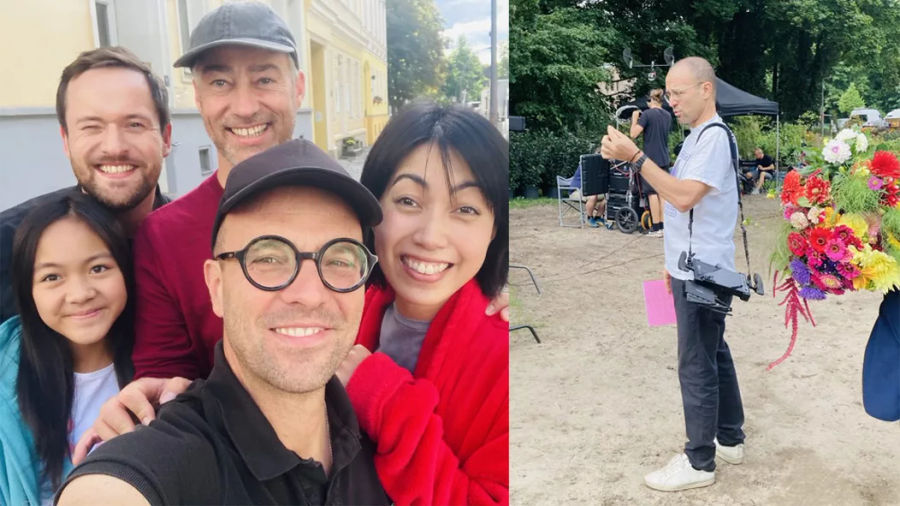
Having directed feature films such as At Home, what do you think is the most important difference in approaching television compared to film?
It depends on the kind of feature film. At Home was a genuine art house project, an auteur film which I wrote the script for myself. Such a feature exists for different reasons than most television shows. It’s a project of great emotional value, as it means so much to the writer/director and their need to express a personal truth about a specific situation. It’s a personal project, where the director has a lot of say on creative decisions.
A series, on the other hand, is a product that comes out of collaboration. And financial expectations play a large role – creative decisions may take place on any level, and the director is there to take up responsibilities and make choices within a matrix of limitations surrounding time and money. The time factor is extremely important while shooting a series, but the quality expectations are equally huge.
A director has to use their tools with great expertise and dexterity, as there’s a lot of pressure. You need to be able to function under that pressure, and have the awareness that this is not a personal art piece, it is television, and comes with specific commercial rules. Those rules don’t necessarily make the end result less interesting, just very different. In my case, during WIR, I knew it had to be entertaining for a specific group of people, an audience in their thirties, so it had to be lively, fun, yet truthful.
How did you find directing a project already in its third season? Can you share any tips in terms of establishing your own voice while staying true to the series?
Even in one season, me and the two other directors each did things differently, while at the same time following the principles given to us in the look book of the series. For example, we all had to use a handheld camera, a creative factor that can be interpreted in so many different ways, so we each set up our own ‘rules’ regarding that.
I used specific heights, angles, and speeds of movement (all carefully planned with my DOP Alexander Gheorghiu), and watched other shows and films to look at aesthetic decisions that we felt matched the show. We decided on colour temperatures and lighting situations, on framing and blocking, generally on ways to tell the story visually – and that created a visual signature which was different to the other directors, in combination with my own approach to directing performances (I often use the well-known Meisner exercises to cultivate connection between characters) as part of my own voice.
It is still the same story, with the same actors and characters, shot under the same unifying parameters, but it has a very different flavour.

As Programme Leader for MA Directing in Berlin, have your students ever taught you something you’ve used in future work?
I always learn from my students, who are young and audacious, often disregarding well-known principles to create surprisingly beautiful and exciting storytelling variations.
To teach filmmaking is to open a door to the future, and film students are the gatekeepers letting us into that world. It teaches me to stay open and receptive – what might at first glance seem unorthodox, or even a mistake, might be a filmmaking miracle, a new approach, something we are not yet able to assess. I always try to let my students know when they surprise me, and when they teach me something about filmmaking.
Following on from above, what is the most important lesson you try to instil in your students?
I think it would be to apply a curious, non-judgemental attitude to everything. By that, I mean not just in the world of film, but in life itself – innovation is not a matter of the technology used, but the perspective you have on the world.
Specifically for the industry, I think that all storytelling formats are interesting, whether it’s a short film, a documentary, a commercial… One might have a personal favourite, but as a director, you should also try to stay open to different things. It is only knowledge that can take away preconceptions and fear – know your tools, know what they are for, and know how to use them best.
- Athanasios Karanikolas is the Programme Leader for MA Directing at our Berlin campus. This course is also taught in London and Leeds.
- Season three of WIR began streaming earlier this year, and you can catch up with the new episodes here.
- Visit Berlin at our upcoming Open Day, Saturday 18 February – get your ticket today.
